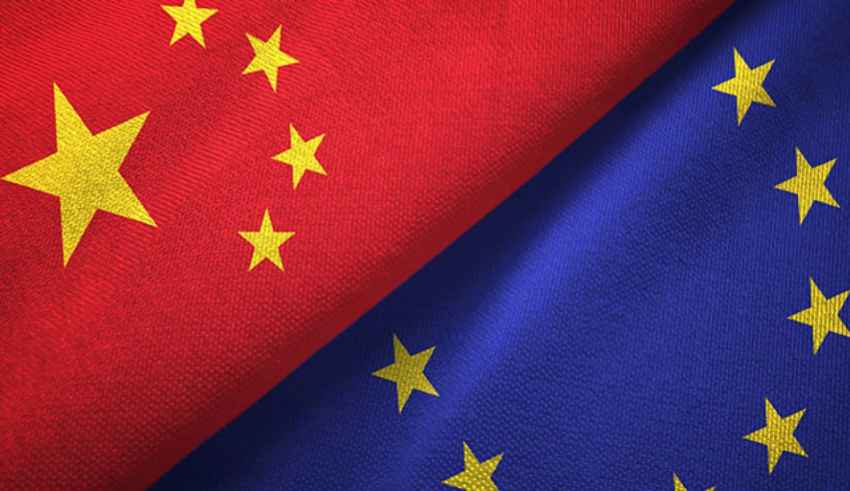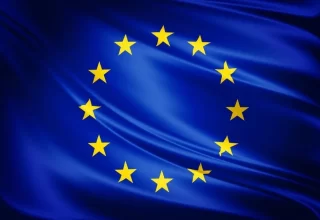
The EU and China signed a bilateral Comprehensive Agreement on Investment (CAI) in December 2020, after eight years of complex negotiations. The document, intends to provide international investors with broader market access, which will be enforced through state-to-state dispute resolution (Sapir, Dadush,2021) . Although, it does not include investor protection (such as against expropriation), investor protection is covered by bilateral investment treaties between EU countries and China, which remain in force (Ibid). However, On May 2021, the European Parliament passed a resolution which stops the ratification process of the CAI. It is declared that, this position Is taken in response to Chinese sanctions on European human rights advocates (Koty,2021). Nevertheless, given the importance of this bilateral agreement on international trade, various aspects of CIA will be addressed in this article.
EU-China Comprehensive Agreement on Investment; Brief Overview
Generally, The CAI was set to facilitate trade and investment between European and Chinese companies within both jurisdictions. This agreement comes after a phone call between Chinese President Xi Jinping and European Commission President von der Leyen, European Council President Charles Michel, German Chancellor Angela Merkel, and French President Emmanuel Macron on behalf of the EU Council Presidency (European Commission, 2020) . China has promised EU investors broader market access than ever before, including some significant new market openings. China is also making pledges to guarantee that EU firms are treated fairly in China so that they may compete on a more equal playing field, particularly in terms of state-owned enterprise discipline, subsidy transparency, and laws against forced technology transfer. China has also committed to ambitious provisions on sustainable development for the first time, including obligations on forced labor and ratification of key ILO basic Conventions (Ibid).
The CAI also includes promises to level the playing field in order to avoid agreement backsliding, as well as a dispute resolution system similar to the one in the US-China Phase One Trade Deal. In the backdrop of ongoing US-China trade sanctions and conflicts, as well as a desire to establish alternative markets, China seeks to secure its economic position in the EU (Koty,2021).
The CAI is based on existing obligations under WTO law, particularly obligations on the prohibition of quantitative restrictions, monopolies. it also designed to pevent forced technology transfer. Article 4 Section II requires that EU investors be granted equal market access to Chinese investors. It provides that (CAI,2020) ;
“1. Each Party shall accord to investors of the other Party and to covered enterprises treatment no less favourable than the treatment it accords, in like situations12, to its own investors and to their enterprises, with respect to establishment and operation in its territory.
2. For greater certainty, paragraphs 1 shall not be construed as preventing a Party from prescribing ordinary formalities, such as a requirement to provide authenticated documents or official translations, or information requirements for statistical purposes, in connection with the covered enterprise, provided that those requirements do not constitute a means to circumvent that Party’s obligations pursuant to this Article.”
A most favoured nation treatment clause provides that EU investors will not be treated by China less favourably than other foreign investors, and vice versa (Article 5 Section II). It requires that (Ibid);
“1. Each Party shall accord to investors of the other Party and to covered enterprises, treatment no less favourable than the treatment it accords, in like situations, to investors and their enterprises of any non-Party with respect to establishment and operation in its territory.
2. Substantive provisions in other international agreements concluded by a Party with a third country do not in themselves constitute treatment under this Article.
3. For greater certainty, the treatment referred to in paragraph 1 does not include investorto-state and other dispute settlement procedures provided for in other international agreements.”
The EU has also secured institutional concessions, requiring that parties ‘shall ensure that any regulatory body […] acts impartially […] in a consistent and non-discriminatory manner’ (Article 3ter Section II). Such terms are not dissimilar to the Phase One Trade Agreement already concluded between the USA and China in 2020 (Konstantinidis,2021).
Nonetheless, from the perspective of economic and geopolitical reasons, the CAI has been criticized by commentators. The major critisim is that it offers little additional market access in China. However, conclusion of this agreement comes at the expense of raising tensions among the EU’s key political partner, the United States.
Suspension of Ratification Process
Although, the CAI is agreed by EU and Chinese leaders on December 30, 2020, however, it is required to be ratified by the European Parliament before taking effect. In this regard, In March 2021, the EU, US, UK, and Canada adopted sanctions on Chinese officials for the alleged violations of human rights in the region of Xinjiang. Consequently, the China imposed certain sanctions on a number of thinK tanks, scholars, and European Parliament politicians.
Therefore, the European Parliament passed the resolution which requires the suspension of CAI ratification. Additionally, the resolution called for greater unity between EU member states on tackling other China-related issues, such as cybersecurity threats (Koty,2021).
Conclusion
the CAI is a crucial bilateral investment agreement which includes provisions on subsidies, state-owned enterprises, technology transfer and transparency. These new provisions will significantly affect market access of EU firms in China. It would also open the way for revision of the World Trade Organization’s multilateral regulations, with the goal of better integrating China into the international trading and investment system.
Although the ratification process is suspended, The European Parliament’s resolution does not mean the agreement is terminated. The resolution could be considered as a political signal to Chinese officials. Therefore, in case China remove sanctions on the EU officials before vote on the CAI’s ratification, which was expected to be held in the autumn of 2021, it is possible that the European Parliament will vote to ratify the CAI.
Bibliography
EU-China Comprehensive Agreement on Investment (CAI),2020, accessed 11 October 2021 <https://trade.ec.europa.eu/doclib/press/index.cfm?id=2237 >.
Sapir, Dadush ,2021, “Is the European Union’s investment agreement with China underrated?”, accessed 11 October 2021 < https://www.bruegel.org/2021/04/is-the-european-unions-investment-agreement-with-china-underrated/ >.
Koty ,2021, “IEuropean Parliament Votes to Freeze the EU-China Comprehensive Agreement on Investment”, accessed 11 October 2021 < https://www.china-briefing.com/news/european-parliament-votes-to-freeze-the-eu-china-comprehensive-agreement-on-investment/ >.
Konstantinidis, 2021, “The EU-China Comprehensive Agreement on Investment: a tale of sound and fury ”, accessed 12 October 2021 < https://www.ejiltalk.org/the-eu-china-comprehensive-agreement-on-investment-a-tale-of-sound-and-fury/>.
By The European Institute for International Law and International Relations.














